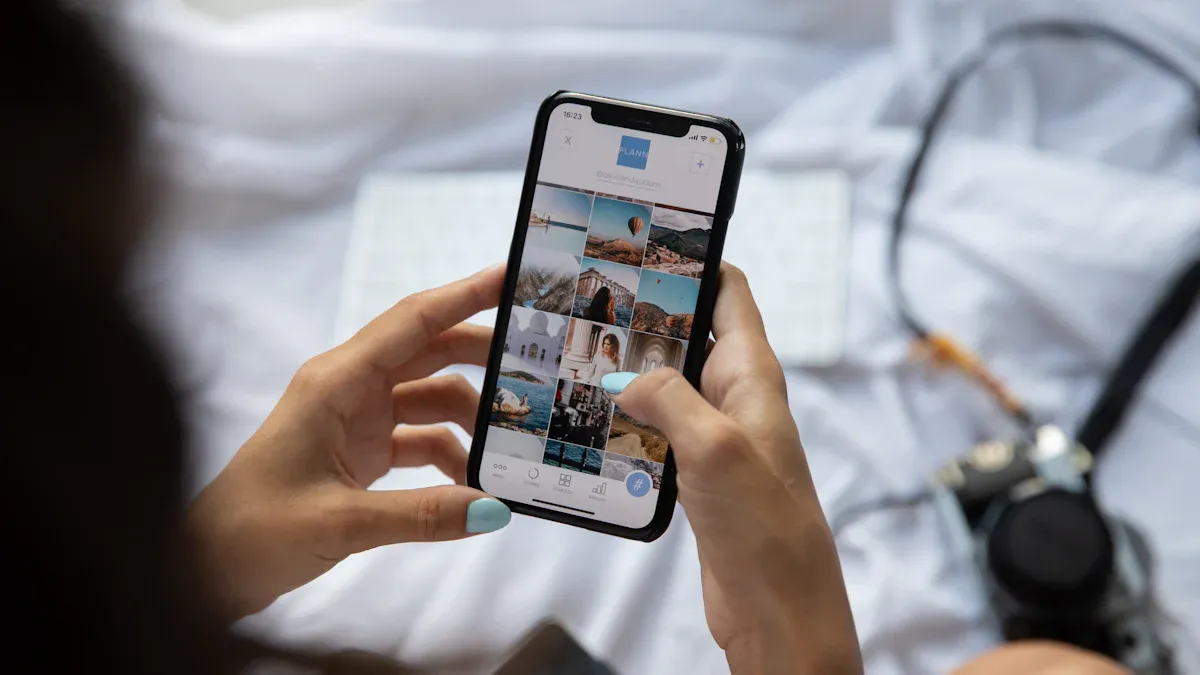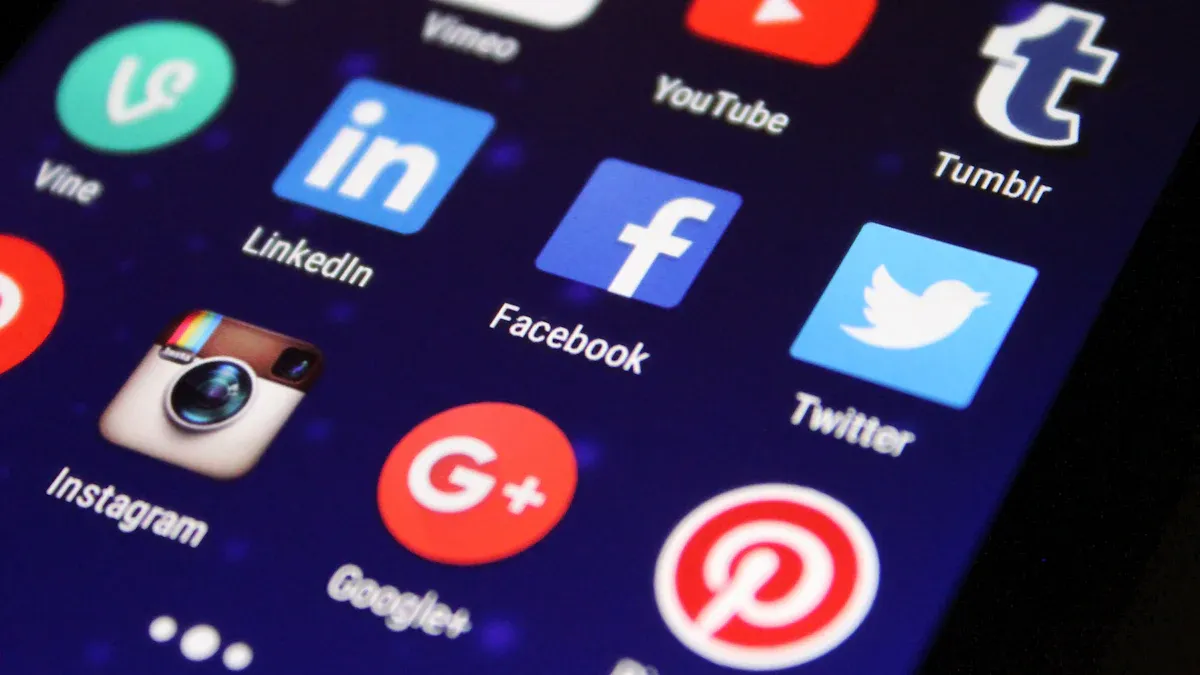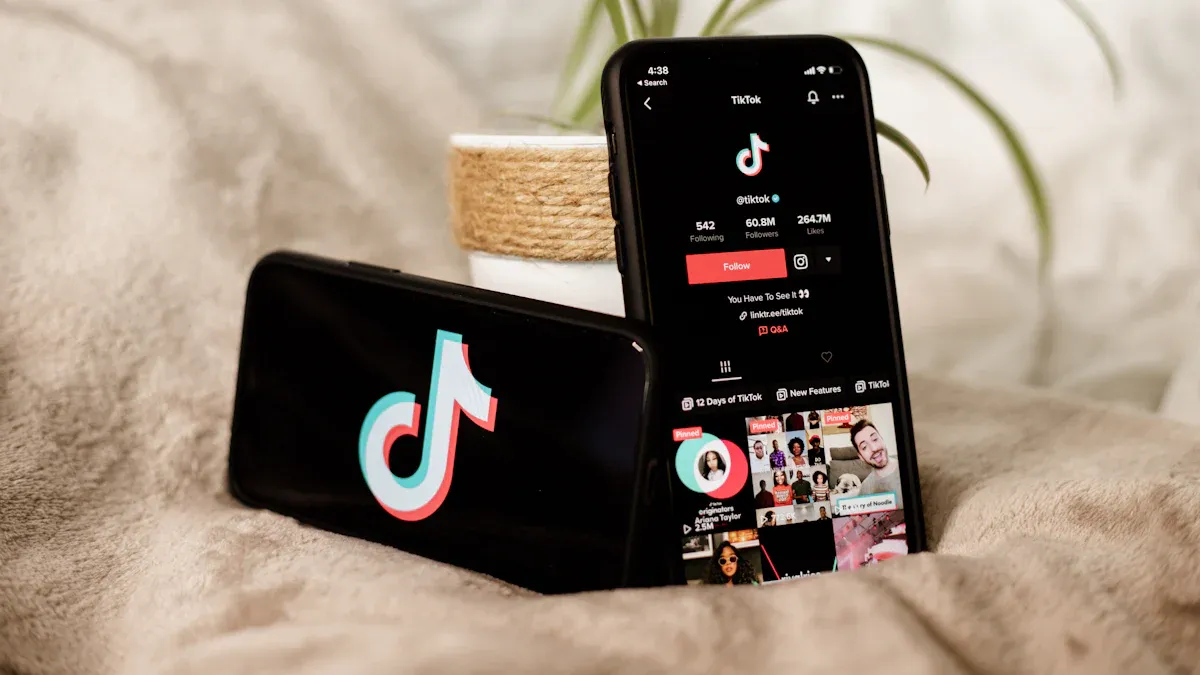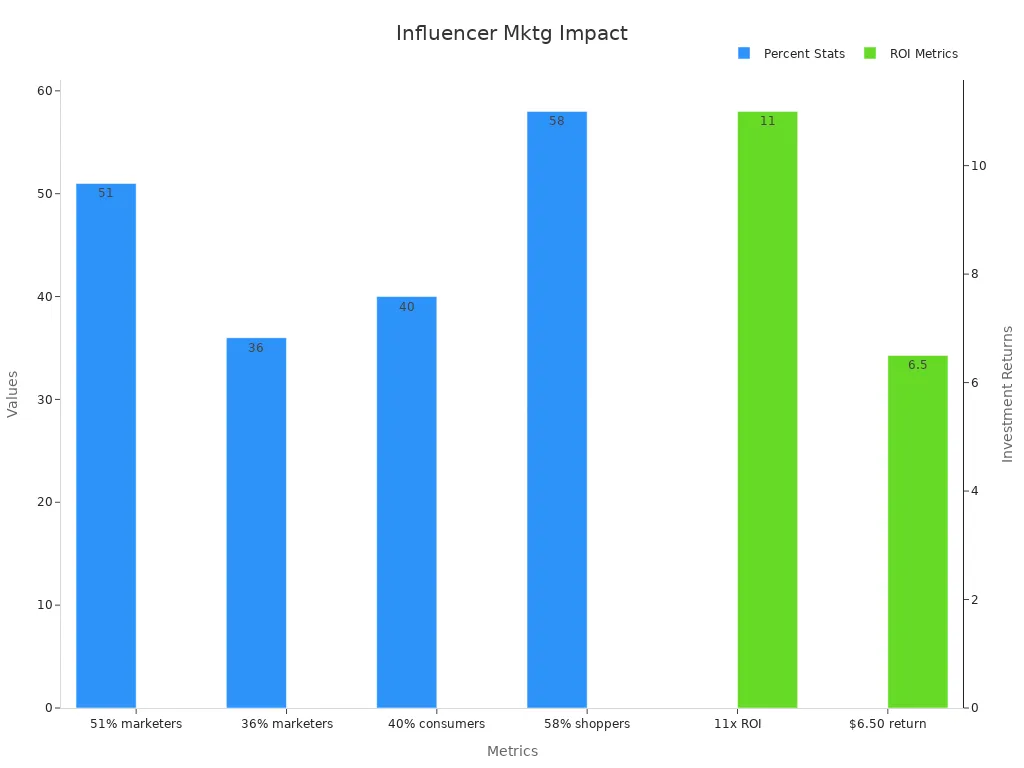How to find influencers: Strategies and tips

People today trust influencers a lot. They don’t just sell things; they change opinions and help people buy. This is the power of influencer marketing. Working with good influencers makes your brand seen and trusted. It’s like using a loudspeaker for your ideas.
What is influencer marketing?
What it means and why it matters today
Influencer marketing is when brands team up with people online to share their products or services. These people, called influencers, talk to their followers in a friendly and real way. Unlike regular ads, this type of marketing builds trust and shares content people can relate to.
This method has changed how marketing works today. Why? Because it’s effective. By 2024, influencer marketing is expected to grow to $34.2 billion worldwide. That’s huge growth, especially since the industry grew by 14.47% since 2022. Now, 80% of businesses spend money on influencer marketing, and 89% of marketers want to spend even more. For every $1 spent, brands make about $5.78 back. No wonder 91% of marketers think it’s a smart strategy.
Short videos, like TikToks and Instagram Reels, are super popular here. They give a 10% return on investment (ROI), which is the best among digital marketing tools. This makes influencer marketing both cool and profitable.
How influencers gain trust and affect what people buy
Influencers are great at earning trust from their followers. People see them as honest and relatable, so their advice feels real. This trust helps shape what people choose to buy.
Here’s how it works:
Influencers seem trustworthy because they are real, skilled, and consistent.
Their suggestions make people feel good about the products they talk about.
Trust makes trying new things less scary. If an influencer you like recommends something, you’re more likely to try it.
In short, influencers don’t just sell—they change minds and guide choices. That’s the power of influencer marketing.
Influencers vs. celebrities and digital creators
How they differ in audience and interaction
Influencers and celebrities connect with people in different ways. Celebrities have many fans, but their audience is broad. Influencers focus on smaller groups with specific interests. This makes their followers more involved and better for certain brands.
Why influencers feel real and relatable
Would you trust a friend over a famous star? That’s why influencers work. They act like friends, sharing honest thoughts and real-life stories. This makes people trust them more. On Instagram, followers of small influencers show 24% more loyalty to brands. TikTok users are 38% more likely to buy from brands backed by genuine influencers.
Celebrities, on the other hand, can feel distant. Their promotions often seem like just business deals. People know celebrities get paid for ads, so their advice feels less trustworthy.
Content style: personal vs. polished
Influencers focus on being themselves. They make content that feels casual and personal. Whether it’s a quick video or a simple post, they aim to connect with their audience. This works well for all types of influencers, from small to big.
Celebrities prefer fancy, high-quality ads. Their promotions are polished and professional. While this looks great, it often lacks the personal touch that makes influencer marketing so powerful.
Types of influencers in influencer marketing

Influencers come in different groups, each with unique strengths. Let’s explore the four main types and how they help brands.
Nano-influencers: Characteristics and benefits
Nano-influencers are small but mighty. They have fewer than 10,000 followers. Their audiences are close-knit, making their advice feel real.
Characteristic/Benefit | Statistic/Detail |
|---|---|
High Engagement Rates | Nano-influencers have a 2.19% engagement rate on Instagram, higher than mega-influencers. |
Cost-Effectiveness | About 50% of marketers say nano-influencers are budget-friendly. |
Influence on Purchasing Decisions | 63% of people trust products recommended by influencers. |
Affordable Collaboration Rates | Nano-influencers charge $10–$100 per post, making them affordable. |
Higher Engagement on TikTok | Nano-influencers have a 10.3% engagement rate on TikTok, beating mega-influencers. |
Nano-influencers are great for small budgets. They’re affordable and relatable. Their high engagement rates make your message stick.
Tip: Nano-influencers work well for local or niche campaigns. Their smaller audience allows deeper connections, making their recommendations feel genuine.
Micro-influencers: Characteristics and benefits
Micro-influencers have 10,000 to 100,000 followers. They balance reach and engagement, making them popular with brands. Their followers see them as relatable, which builds trust.
Micro-influencers have strong engagement due to their close communities.
Their recommendations feel honest, leading to better sales.
They’re cost-effective, letting brands work with several influencers at once.
Social media algorithms favor their engagement, boosting organic reach.
Brands using micro-influencers often gain loyal customers. These influencers create a sense of community, enhancing your message. They’re perfect for reaching different groups without overspending.
Did you know? Micro-influencers are seen as 92% more trustworthy than ads. They deliver 11 times better returns compared to other strategies.
Macro-influencers: Characteristics and benefits
Macro-influencers have 100,000 to 1 million followers. They’re well-known in their fields and reach large audiences. Their engagement rates are lower, but their wide reach boosts brand awareness.
Instagram says branded content with paid ads is 90% more cost-effective.
TikTok’s Spark Ads get 142% higher engagement than other ads.
Meta data shows creator-based ads increase return on ad spend (ROAS) by 15%.
Macro-influencers are great for scaling campaigns. They’re ideal for launching products or running big promotions.
Pro Tip: Use macro-influencers with paid ads for better results. This combo increases reach and impact.
Mega-influencers: Characteristics and benefits
Mega-influencers are social media stars with over 1 million followers. They often have traditional fame too. Their huge reach is perfect for global campaigns but costs more.
Their engagement rates are lower, but they create buzz. Campaigns like Nike’s "Dream Crazier" show their power to inspire and connect with younger audiences.
Mega-influencers are ideal for brands wanting big visibility. They’re great for product launches or rebranding efforts.
Note: Mega-influencers suit brands with big budgets and global goals. If you want a viral moment, they’re the best choice.
Influencer marketing strategy: How to find influencers

Finding the right influencers might seem hard, but having a plan helps. Let’s break it into simple steps to find influencers who fit your brand.
Set your goals and know your audience
Before searching for influencers, think about what you want to achieve. Do you want more people to know your brand, sell more, or build partnerships? Clear goals will guide your choices.
Next, understand your audience. Who are they? What do they like? For example, if your brand sells eco-friendly items, find influencers who care about the environment. Matching your goals with your audience keeps your strategy focused.
Pro Tip: Use numbers to track success. For awareness, check reach and engagement. For sales, measure conversions and ROI.
Try social media tools
Social media tools make finding influencers easier. They show engagement, audience details, and spot fake followers. Tools like Tool A, Tool B, and Tool C help with tracking and planning campaigns.
Tool Name | Features | Strengths |
|---|---|---|
Tool A | Audience analysis, Campaign tracking | Great for engagement insights |
Tool B | Performance tracking, ROI measurement | Strong audience data |
Tool C | Demographic analysis, Budget tracking | Good for campaign planning |
These tools save time by gathering data in one place. They help you find influencers who match your brand.
Use hashtags and keywords
Hashtags are great for finding influencers. They work like search tools on social media. For example, if you sell fitness gear, search hashtags like #FitnessGoals or #WorkoutTips.
Hashtags help you find niche audiences.
Popular hashtags increase your visibility.
Unique hashtags track campaigns and engagement.
Did you know? Posts with good hashtags get more likes, comments, and shares. This makes them useful for finding influencers.
Look at competitors’ choices
Your competitors can teach you a lot. Check which influencers they work with and how their campaigns perform. Did they succeed? What content worked best?
Insight Type | Description |
|---|---|
Strategic Insights | Helps pick better influencers and ideas. |
Market Gap Identification | Shows new trends and audience needs. |
Competitive Advantage | Improves your strategy by learning from others. |
Studying competitors helps you find influencers who might also suit your brand.
Attend events and conferences
Industry events are great for meeting influencers. These gatherings bring brands and influencers together, making it easy to connect.
Meeting influencers in person builds trust and shows their professionalism.
Use influencer platforms
Special platforms make finding influencers simple. They help manage campaigns, track results, and automate tasks.
Check engagement, not just followers
An influencer’s follower count isn’t everything. Engagement is more important. Look at likes, comments, and shares to see how their audience reacts.
Engagement shows how connected they are with followers.
Conversions reveal how many sales or sign-ups they bring.
Audience growth shows how they can expand your reach.
Tracking these helps you pick influencers who truly impact your brand.
Ask for referrals
Sometimes, the best influencers come from recommendations. Ask others in your network for suggestions. Trusted referrals often lead to reliable partnerships.
Review past work
If you’ve worked with influencers before, review those campaigns. What went well? What didn’t? Looking at past results helps you improve your strategy and pick influencers who deliver.
Note: Track metrics like engagement, reach, and ROI from old campaigns to plan better.
Using print-on-demand for influencer marketing
Why customizable products are great for influencer partnerships
Custom products make influencer marketing more exciting and personal. They allow brands to design items that match the influencer’s style and audience. Picture an influencer showing off a tote bag with a fun slogan or a mug with a cool design. These items don’t just advertise—they share a story.
Here’s why they’re effective:
Social media platforms like Instagram and Pinterest show these products in everyday life.
Influencers connect with followers through posts, videos, and chats, building trust.
Partnering with influencers introduces your brand to new people, boosting sales.
Custom products help create a bond with your audience. This strategy increases visibility and makes your brand stand out.
Popular product ideas: t-shirts, mugs, and tote bags
Print-on-demand offers endless product options. T-shirts, mugs, and tote bags are top picks because they’re useful and easy to personalize.
T-shirts spread your brand message wherever people wear them.
Mugs and tumblers are handy items that keep your brand in daily life.
Tote bags, like eco-friendly ones used by influencers, mix style with sustainability.
Did you know? 40% of people are more likely to return to a business after getting branded items. Giving these products during influencer campaigns leaves a lasting impression and encourages repeat customers.
How print-on-demand makes product creation easier
Print-on-demand services simplify making and delivering products. You don’t need to store items or pay upfront costs. These services handle printing and shipping, saving time and effort.
With print-on-demand, you can focus on your influencer strategy while experts handle logistics. This method ensures your products reach the right audience without stress.
Influencer marketing is a powerful way to grow your brand. It helps build trust, boost engagement, and reach the right people. From nano-influencers to mega-influencers, each type has unique advantages for your goals.

To get the best results, use smart tools and strategies. Print-on-demand services, like Yoycol, make custom products easy to create. With the right plan, you can grow your brand and succeed long-term.

